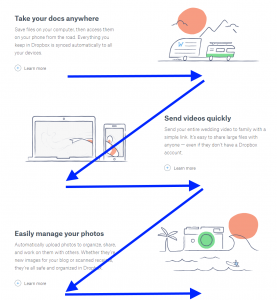Small businesses typically do not have the same resources or budget funds as their retail giant counterparts, making the leap into e-commerce that much greater for them.
Luckily, consumers aren’t aware of the size of your e-commerce budget, so the amount you spend on creating your platform is not as important as the features and services available to them – such as in-depth product information, order tracking and stored payment information.
Advancements in retail technology today are leveling the e-commerce playing field and equipping small retailers with the tools and capabilities they need to satisfy consumer expectations.
Specifically, there are four technology-based strategies that small e-commerce providers can use to close the gap and master e-commerce like the pros:
- Seamless Channels
Consumers expect seamless transitions between channels, especially when it comes to the use of mobile devices. A recent SecureNet/Worldpay study found that more than half of consumers (55 percent) have used a mobile device to research a product while in store, and 21 percent reported buying a product from their phone while browsing for the same item in the physical store. Retailers need to provide a robust mobile platform with the ability for their customers to purchase in-app. While most retailers have mobile sites that offer this capability, consumers become frustrated when they can’t move across channels to complete a transaction, highlighting the need for a seamless shopping experience at all touchpoints.
- Data Storage
The same SecureNet/Worldpay study found nearly one in three shoppers said they would be more likely to buy from an online retailer that stores and automatically loads payment information at checkout. Payment processors can, through cloud storage or vaulting, equip retailers with this capability, but security is a critical component to consider before choosing a processor.
If retailers don’t prioritize security, they risk losing customers. SecureNet’s study found that 45 percent of consumers are unlikely to shop at a retailer that has suffered a recent security breach. In addition to the online security standards set by the Payment Card Industry (PCI) compliance, small businesses need to arm themselves with more advanced security features that many payment processors can also provide. These technologies, such as end-to-end encryption and tokenization, can help prevent breaches and data loss, protecting sensitive consumer data as it travels through the transaction process, removing the onus from retailers to do so.
- Inventory Management
Real-time inventory management is a cornerstone of successful e-commerce. But inventory management presents serious challenges for small retailers, especially those who sell the same products online and in-store.
Affordable inventory management solutions can go a long way toward improving the e-commerce experience for both customers and retailers. In some cases, inventory management technologies can facilitate package tracking, cross-channel transactions (e.g. buying online and picking up in-store) and real-time product re-stocking, all of which consumers expect from top-tier online retailers.
This is particularly valuable to consumers, as 65 percent of shoppers say it is important for them to be able to buy an item online and have the option to return it or exchange it in-store. Small retailers need to focus on growing their customer base, and by offering a responsive, real-time shopping experience, they increase the likelihood of doing so.
- Feedback Platforms
Consumers today are ultra-educated and they expect online retailers to provide a wealth of information about products and the brand itself. But brand-generated content only goes so far. To satisfy consumers’ craving for information, small retailers need to develop ways to capture and distribute feedback from customers.
Product ratings, reviews, submitted images and other forms of customer-generated content strengthen the brand’s reputation with potential as well as existing customers. By capitalizing on authentic, positive conversations about the brand, small retailers can achieve significant online sales growth.
According to Bloomberg, eight in 10 entrepreneurs who start businesses fail within the first 18 months. These aforementioned tips will help boost your e-commerce strategy, helping to make your business part of the fantastic 20 percent that succeed. Although the transition to e-commerce isn’t easy, it may not be as difficult as it seems. With the right strategy, partners and a handful of technologies, it’s possible for small businesses to shorten the transition time and effectively compete against large online competitors.
(188)
Report Post





